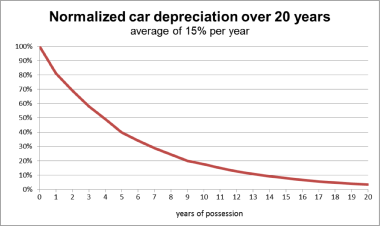Greg Standing looks at the importance of the nature and
wording of personal guarantees.
 Motor finance companies sometimes take personal guarantees
Motor finance companies sometimes take personal guarantees
as extra security on transactions. The Insolvency Act 1986 (IA)
provides that a creditor’s petition (for bankruptcy) must be for a
debt owed by the debtor and, as per Section 267(2)(b) IA, that the
debt must be for a liquidated sum and be unsecured.
The issue in relation to guarantees
is whether the liability of the guarantor can be treated as one
which is reduced to an agreed sum by the guarantee, making it a
liquidated sum that can form the basis of a bankruptcy
petition.
In McGuinness v Norwich &
Peterborough Building Society, McGuinness entered into a
guarantee to pay the principal sum due and interest, should his
brother default on his mortgage liabilities to the lender. Default
occurred. The property was unsaleable so the lender attempted to
enforce the guarantee by issuing bankruptcy proceedings against
McGuinness.
McGuinness argued that his
liability under the guarantee was not a debt for a liquidated
amount as was required by s267(2)(b) IA. Rather, it was a liability
in damages for an unliquidated sum and the lender needed to obtain
a judgment against him before it could issue a petition.
How well do you really know your competitors?
Access the most comprehensive Company Profiles on the market, powered by GlobalData. Save hours of research. Gain competitive edge.

Thank you!
Your download email will arrive shortly
Not ready to buy yet? Download a free sample
We are confident about the unique quality of our Company Profiles. However, we want you to make the most beneficial decision for your business, so we offer a free sample that you can download by submitting the below form
By GlobalDataThe court disagreed. The wording of
the guarantee imposed on McGuinness, as a principal debtor,
either:
- a conditional payment
obligation – a promise to pay the instalments of principal and
interest which fall due if the principal debtor fails to make
payment; or - a concurrent liability with
the debtor, for what is due under the loan agreement.
The debt was therefore for a
liquidated amount. McGuinness appealed.
The Court of Appeal held that where
a guarantor promised to pay the principal sum due and interest in
the event of default, the claim was one in debt in a pre-agreed
amount even if the contractual formula had to be operated to
produce a figure.
However, where the guarantee was a
“see to it” obligation (that is, the guarantor
provides an undertaking that the principal debtor would perform his
own contract with the creditor), this created a liability for
unliquidated damages.
The proper construction of the
guarantee showed that McGuinness was a principal debtor as his
liability was concurrent with that of the borrower, not contingent
upon it.
The guarantee itself specified his
liability for a pre-agreed sum. The lender had been entitled to
proceed as it had.
Things to
consider
There is no need, in cases where
the guarantor is a principal debtor, for finance companies to
exhaust their remedies against the customer before turning to the
guarantor. The cheaper and quicker bankruptcy route is available
and the guarantor cannot rely on failure to proceed against the
customer as a failure to mitigate in an attempt to reduce his own
liability.
Greg Standing is a partner in
Wragge & Co’s motor finance litigation team







